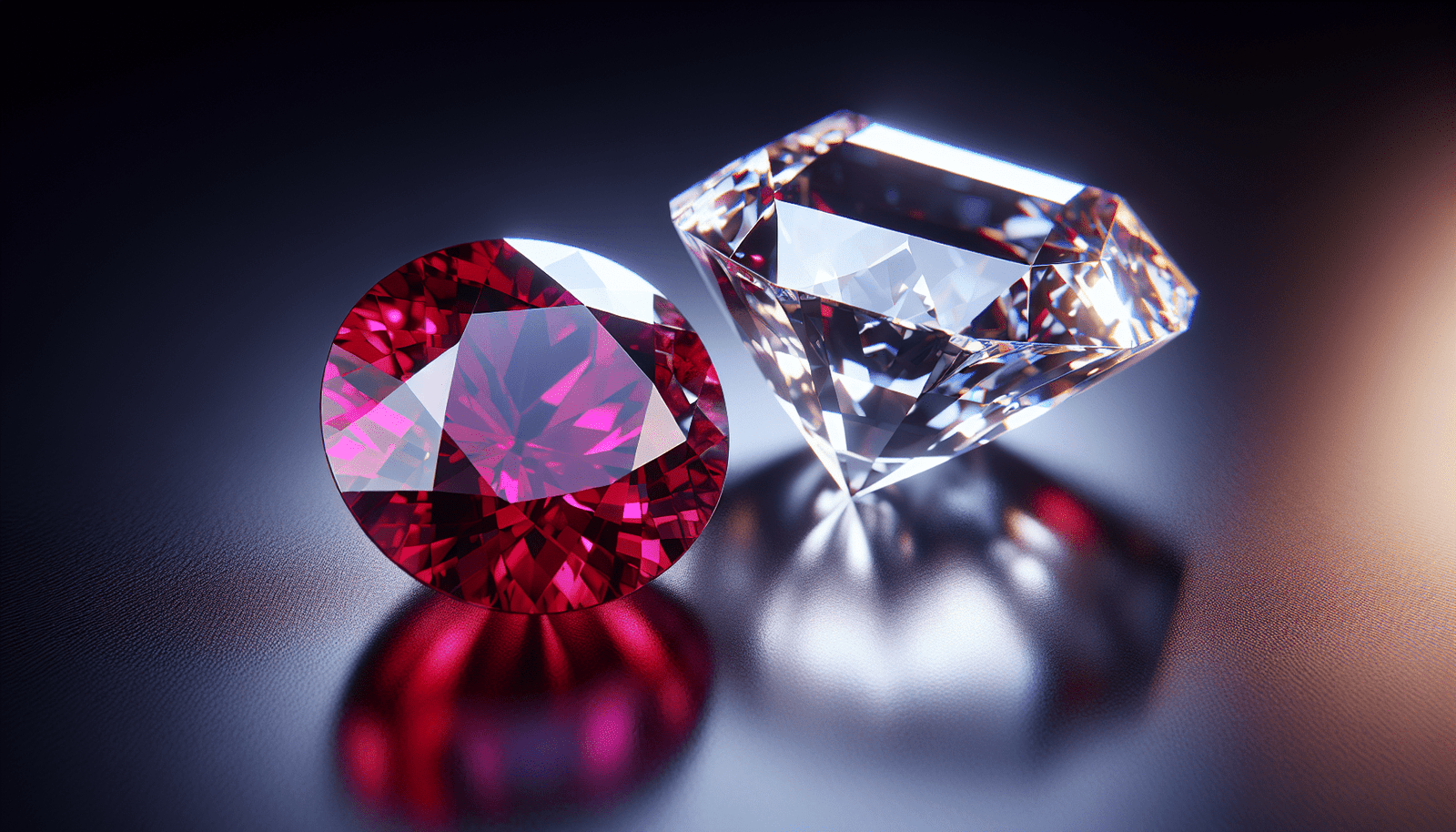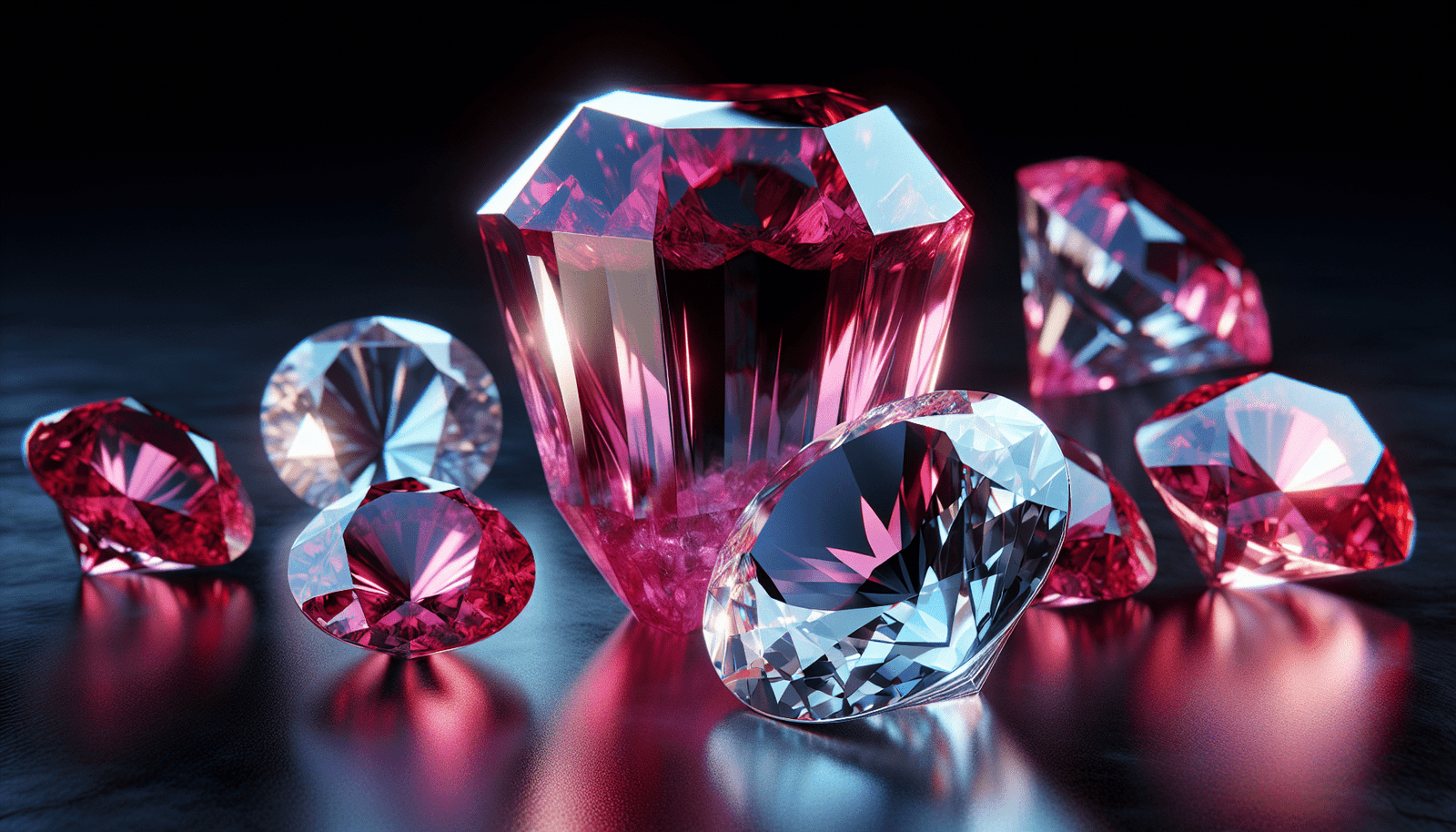Have you ever caught yourself wondering whether rubies might be more expensive than diamonds? You’re not alone. These striking gemstones both capture the imagination with their allure and elegance. But when it comes to value, which one truly holds the throne? The world of gemstones is rich with history, nuance, and variability, so let’s take a friendly walk through this glimmering maze.

The Lure of Rubies
Rubies have always had a certain mystique about them. They’re celebrated in literature, art, and history for good reason. The fiery red of a ruby isn’t just a color; it’s a statement, a symbol, a mood. But what really makes rubies so special, and how does that affect their price?
Historical Significance
From ancient civilizations to modern times, rubies have held a unique place in human culture. In Sanskrit, the ruby is known as “ratnaraj,” meaning “king of precious stones.” Worn by royalty and warriors alike, rubies were believed to grant protection and grant courage. This rich, storied past adds layers of value to the stone, far beyond its physical attributes.
The 4 Cs: Color, Cut, Clarity, and Carat
While diamonds have their well-known grading system based on the 4 Cs—Color, Cut, Clarity, and Carat—rubies are also evaluated by similar standards. A top-quality ruby typically has a vibrant, saturated red hue, often referred to as “pigeon’s blood.” Unlike diamonds, a ruby’s color can have an even greater impact on its price.
Origin Matters
Where a ruby comes from can significantly impact its price. Rubies from Myanmar (formerly Burma) are often considered the most valuable because of their exceptional color and clarity. In contrast, rubies from other locations such as Thailand or Mozambique, while still beautiful, may not fetch the same high prices.
Here’s a comparison table to show you how rubies from different origins stack up:
| Country | Notable Characteristics | Relative Value |
|---|---|---|
| Myanmar | Pigeon’s blood color, high clarity | Very High |
| Thailand | Darker reds, sometimes with brownish tints | Moderate to High |
| Mozambique | Bright red, often with excellent clarity | Moderate to High |
Diamonds: The Epitome of Luxury
When you think about dazzling jewelry, diamonds probably sparkle in your mind’s eye. Known universally as a girl’s best friend, diamonds are celebrated for their clarity and brilliance. They’re also steeped in cultural and commercial significance.
Established Value System
Diamonds have long been the benchmark against which other gemstones are measured. The elements that dictate diamond prices are straightforward due to the standardized grading system developed by the Gemological Institute of America (GIA). This consistency makes it easier for consumers to understand what they are paying for.
Industrial and Emotional Worth
Beyond serving as luxurious adornments, diamonds have industrial applications due to their unparalleled hardness. This adds an additional layer of value to diamonds that rubies don’t have in the same measure. Emotionally, diamonds are tied into significant life events, like engagements and anniversaries, through powerful marketing campaigns, most notably by De Beers.
Synthetic Diamonds
Unlike rubies, diamonds are increasingly available in synthetic forms that are almost indistinguishable from their natural counterparts. These synthetic diamonds are often cheaper but can confuse the market, raising questions about value and authenticity.

The Cost Factor: Are Rubies More Expensive Than Diamonds?
So, back to the burning question: Are rubies more expensive than diamonds? The answer, frustratingly enough, is it depends.
Commodity vs. Rarity
Diamonds are mined in larger quantity relative to rubies. While this seems like it should make rubies far more expensive, diamonds’ market dynamics and controlled availability often balance out the scale.
Rubies, on the other hand, offer rarity, especially those of higher quality and from prized origins. This rarity can make top-grade rubies surpass diamonds in price, albeit not always.
Market Influence
Let’s look at how market demand affects these gemstones’ prices. Diamonds have a broad, global market bolstered by robust advertising and cultural significance. This broad demand keeps high-quality diamonds’ prices relatively consistent but also relatively high. On the other hand, rubies enjoy a niche but strong demand, especially in regions like Asia.
The following table summarizes different factors and their influence on rubies and diamonds.
| Factor | Rubies | Diamonds |
|---|---|---|
| Market Demand | Niche, strong in specific regions | Broad, global |
| Historical Significance | Deep, multifaceted | Prominent but modern-driven |
| Origin Importance | Extremely critical | Important but with broader supply |
| Availability | Less available | More available, mined extensively |
| Synthetic Alternatives | Few and less popular | Widely available and accepted |
The Comparative Cost
When trying to compare the costs of rubies and diamonds of similar quality, the waters can get murky. For example, a 1-carat top-quality ruby could easily surpass the price of a 1-carat diamond of top quality, but this isn’t always cut and dry. The specifics of each gemstone—color, clarity, cut—dramatically influence the final price.
Investment Value: Longevity and Trends
Are you considering these gemstones as an investment? It’s wise to think about their longevity and market trends.
Diamonds: A Tried-and-True Choice
Diamonds have historically been a safe investment due to their broad appeal and stable value. When you buy a diamond, you’re buying into a form of wealth that’s widely recognized and can be fairly easily liquidated. However, the influx of synthetic diamonds and changing consumer tastes could affect long-term value.
Rubies: The Exotic Investment
Rubies offer the allure of rarity, especially high-quality offshoots like Burmese rubies. They often appreciate well, particularly those with exceptional coloration and clarity. However, the ruby market can be volatile, subject to mining discoveries and changes in demand.

Personal Preference: What’s Your Spark?
When debating between rubies and diamonds, personal preference can’t be understated. Both stones offer unique allure, and the decision ultimately lies in what appeals to you most.
Emotional Connection
A lot of people form strong emotional connections to specific gemstones. You might value rubies’ deep, historical significance or be captivated by the eternal brilliance of diamonds. This emotional resonance can often dictate choice just as much as cost.
Occasion and Usage
What are you planning to use the gemstone for? Is it for an engagement ring, a lasting everyday piece, or a more sporadic, special event accessory? Rubies might be better suited for statement pieces, while diamonds lend themselves well to more versatile settings.
Final Thoughts: Making Your Decision
There’s no one-size-fits-all answer to whether rubies are more expensive than diamonds. The answer depends on a myriad of factors including rarity, demand, and individual gem quality. While top-end rubies can surpass diamonds in value, the widespread demand and understood grading of diamonds provide their own form of priceless certainty.
Ultimately, whether you lean towards rubies or diamonds, you’re investing in a fragment of our planet’s natural splendor, a piece of enduring beauty, and a potential heirloom for generations to come. Consider what resonates most with you, and let that guide your choice.



